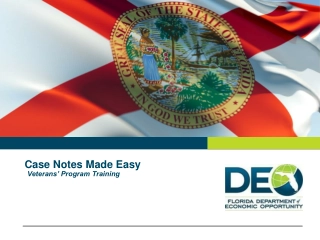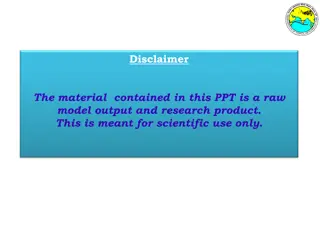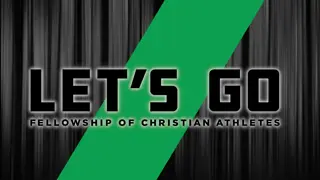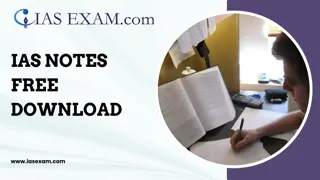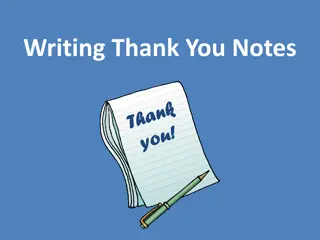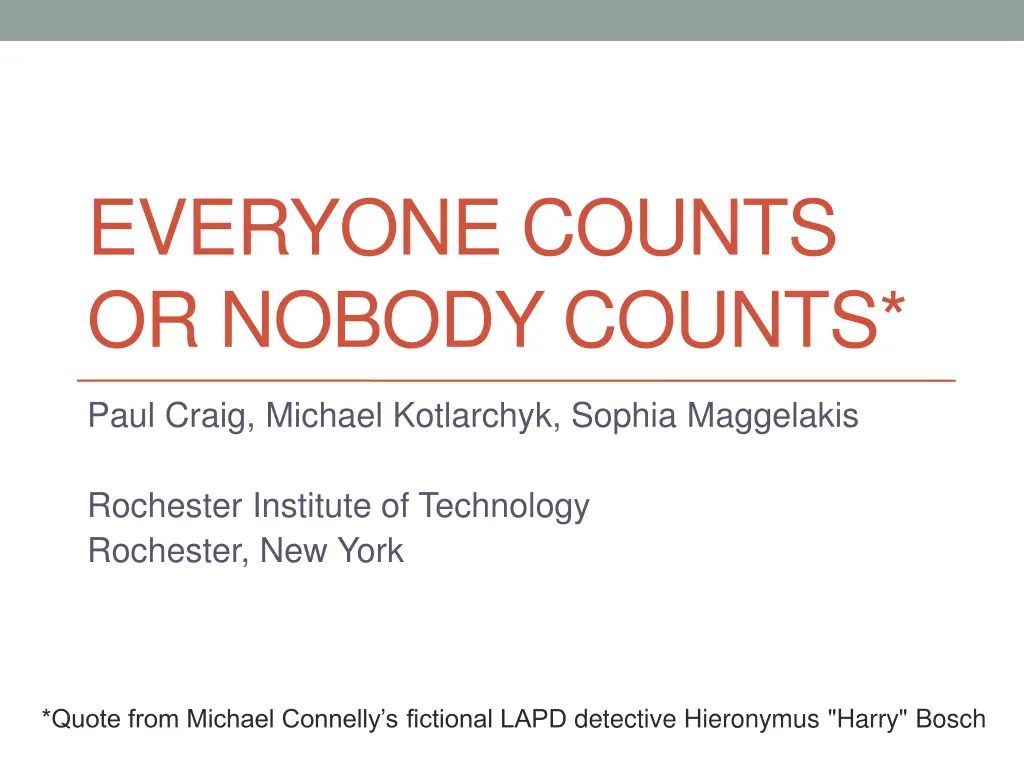
Challenges and Goals at Rochester Institute of Technology
Explore the challenges and goals at Rochester Institute of Technology, focusing on inclusivity, problem-solving, innovation, and academic excellence. Learn about the College of Science, its academic units, and the mission to make every individual count while addressing various expectations and concerns within the institution. Discover how faculty, staff, and administrators work together to tackle the competing goals of maintaining quality teaching, increasing research output, and supporting student success.
Download Presentation

Please find below an Image/Link to download the presentation.
The content on the website is provided AS IS for your information and personal use only. It may not be sold, licensed, or shared on other websites without obtaining consent from the author. If you encounter any issues during the download, it is possible that the publisher has removed the file from their server.
You are allowed to download the files provided on this website for personal or commercial use, subject to the condition that they are used lawfully. All files are the property of their respective owners.
The content on the website is provided AS IS for your information and personal use only. It may not be sold, licensed, or shared on other websites without obtaining consent from the author.
E N D
Presentation Transcript
EVERYONE COUNTS OR NOBODY COUNTS* Paul Craig, Michael Kotlarchyk, Sophia Maggelakis Rochester Institute of Technology Rochester, New York *Quote from Michael Connelly s fictional LAPD detective Hieronymus "Harry" Bosch
Agenda 12:45 Presentation about our current efforts at RIT 1:05 Breakout groups to identify common challenges 1:25 Top four challenges are selected from all groups 1:45 Four groups reform around interest in challenges 2:05 Groups report possible solutions 2:20 Summary by the facilitators
About RIT 1,300-sq-acre campus in suburban Rochester Enrollment: 15,400 UG; 3,200 grad 9th largest enrollment of US private universities Nine colleges, large enrollment in STEM disciplines Known for cooperative education Quarter-based academic calendar converts to semester calendar in Fall 2013
About the College of Science Academic Units Gosnell School of Life Sciences School of Mathematical Sciences School of Physics & Astronomy School of Chemistry & Materials Science Chester F. Carlson Center for Imaging Science Faculty 132 tenured and tenure-track 48 lecturers 10 Research Faculty and 7 Visiting Faculty Staff Advisors Facilities Management Administration Research Scientists Postdoctoral Fellows
The Goal Make all faculty, staff, and administrators feel like they count Find solutions that Meet the needs of individuals Respect the concerns of all groups Address the expectations of our students, their parents, and all our constituents Communicate and implement these solutions Help faculty and staff understand the challenges that administrators face Help administrators understand the challenges that faculty and staff face
Competing Goals in the College of Science Maintain Quality Teaching in Light of Rising Research Expectations More Ph.D. Programs Pressure to win funding Higher publication requirements for tenure and promotion Increasing Enrollment Improving Retention Autonomy vs. Sense of Belonging Culture shift Technology Social media Societal attitudes about education and college loans
Our Approach to Meeting These Challenges Monthly College wide meetings Meetings with specific groups The Dean meets monthly with all the pre-tenure faculty The Dean holds separate meetings each semester with NTT faculty, associate professors and full professors over lunch Weekly meeting with the department heads and the dean Each department head meets 1:1 with the dean each month Monthly reading sessions with the heads and the dean on topics related to leadership in higher education
Our Approach to Meeting These Challenges Advisory Boards meet regularly with the Dean COSSAB (College of Science Student Advisory Board) COSSAC (College of Science Staff Advisory Council) COSLAC (College of Science Lecturers Advisory Council)
Our Approach to Meeting These Challenges Centralized Academic Advising Workload Portfolios Scholar, Blended and Teaching Research Symposia COS faculty returning from sabbatical or with COS funding RIT Undergraduate Research Symposium Funding Competitive funding for NTT faculty Dean Research Initiation Grants to help tenured and tenure-track faculty Competitive funding for Staff Professional Development
Ground Rules Everyone participates Each of you writes out your answers to the questions Everyone shares in your small group Look for common challenges Seek common solutions Goal each of you leaves with something concrete that you can implement on your own campus
Breakout Groups What are the top two challenges that you face in providing for the needs and concerns of your faculty and staff? Record your findings on a large 2 x 3 post-it notes
Top Two Concerns for Each Group Strained or stagnant budgets 4X Faculty and staff won t speak their minds out of respect for chairs Implementing differential workload Equality vs. parity Maintaining faculty numbers to fulfill positions Role of the dean and lack of communication/transparency Collegial governance Silos of multiple campuses Online classes Questions of research productivity and scarcity of funds How to celebrate the good actors
Selection of 4 Top Challenges Review the findings of each group Look for commonalities Select the top 4 challenges by vote Form new breakout groups that focus on each of the 4 challenges
Top Challenge Breakout Groups Is this a universal solution or specific to your own campus? If you solve a problem for one group, will it create problems for others? What type of support will you need from your Dean to implement this solution? Can you project a timeline for implementing our solution? Share best practices what has worked for you?
Presenting Group Findings Identify your challenge Suggest solutions General vs. local Best practices to report (are you doing this already?) Support you would need Timeline Unintended consequences
Strained or stagnant budgets There should be transparency in terms of educating the faculty and staff about how the budget works, including an explanation. If the campus culture is administratively top-down, that needs to be explained to the faculty or corrected. Alternative sources of income should be explored (pot money in Colorado or lottery money, appealing to the president for capital funds from fundraising). Vote in the right legislators to get state funding and support.
Workload policies Campuses must provide a workload policy to clarify expectations for all faculty: non-tenure track as well as tenured/tenure-track. Minimum expectations must be clear. The workload model document must emphasize the benefits as well as the expectations of the workload. With clarified workload models, peer pressure should should be a motivator as well. Associate the workload and plan of work with the contract. Tie that into incentives and rewards. This will also help with motivating tenured faculty.
Silos Identify the silos on your campus: Different campuses Grad vs. undergrad faculty Adjuncts and full time Effect of unions Communication is the solution between groups Reconnect with the institutional mission to find common issues Consistent communication Shared governance body in decision processes, e.g., have faculty from different areas contribute to salary discussions. Support each other Find the common thread (goals) that is consistently communicated. This comes back to core values Collaborative projects
Limited funding vs. increased research expectations Educate upper administration to have a realistic transition of expectations. Emphasize efforts rather than demanding the funding. Explain that some disciplines cost more than others. Educate the faculty about the funding needs of different disciplines Deans and chairs must enforce the deliverables of the faculty Mentorship for writing grant proposals Bring in outside people from NSF to help with grant funding mentoring, CUR



